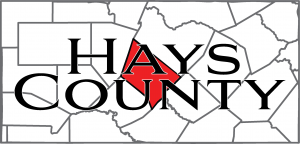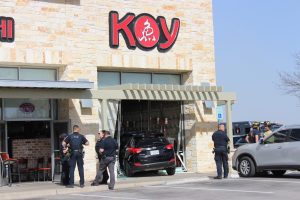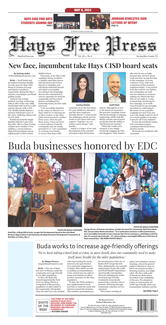By Theresachristine Etim
For the first time in the city’s history, Kyle will get a glimpse into how much work it may need to fix its network of roads.
It’s part of Kyle’s first-ever pavement assessment of the city’s street.
The assessment, which is being conducted by Civil Engineering Consultants (CEC), is an evaluation of the city’s approximately 132 miles of roadway. It’s done in an aim to accurately determine what streets need repair, as well as the magnitude of work those roads may need.
Kim Hilsenbeck, communication specialist for the city of Kyle, says the approach to fixing streets varies on that road’s particular needs.
“There are different technologies used for different problems, so that repairs can be made,” Hilsenbeck said.
Kyle will spend $80,770 to hire CEC to perform the pavement assessment. The amount is part of the city’s Fiscal Year 2016 budget, which totals $80.1 milion dollars.
Hilsenbeck said the assessment isn’t part of the Public Works Department’s road budget. She said in an emailed response that the city’s budget for ongoing street improvements is $500,000.
Hilsenbeck added that the Public Works Department budget for street improvements is not part of the city’s $36 million road bond. In addition, existing roads under the 2013 Road Bond program, which include Bunton, Goforth, Lehman and Burleson, are not part of the assessment.
With the information in hand, Hilsenbeck said the city could then determine and allocate money to streets and roads that need the most attention.
Hilsenbeck said how much money should be spent on certain roads is determined by several factors.
“When looking at the money for the roads, how the spending goes is that we focus not on who has the most money,” Hilsenbeck said. “Our decision is an objective, calculated study of the roads, and what we think needs the most work.”
CEC will conduct the assessment using equipment such as video cameras. The contract will connect video cameras. There will be a camera pointed down at the street, and one facing forward, the direction of the car, and they’ll be attached on top of the car.
City Engineer Leon Barba said the city is still collecting data, and there is still information that needs to be found before the assessment is brought before city council early next year.
“We’ll have computers look at that information, and then we’ll review it with our information to see if it’s the same thing,” Barba said.
The assessment will be comprised of color-coded maps, which he said would designate which streets need the most attention. Barba also said the assessment could also use a scaling system, that assesses degree of damages based on number. Barba said, however, that the city hasn’t implemented the scale at this time. He said the city is unsure about how the scale could look as not officially part of the assessment.
“Areas in red will be the areas that most likely need the most money, where as green areas will probably not be that big of a deal,” Barba said.
Barba said the city plans to bring the assessment to council around January or February of 2016.
But when fixing roads, Barba compared it to painting a house.
“Where the painting is all what some homes need, other homes might need a little more labor,” Barba said.










